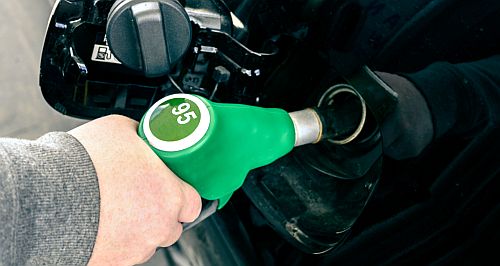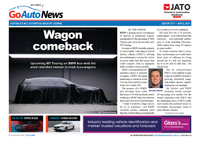Make / Model Search
News - Climate councilClimate Council details government NVES proposalSAVINGS: The Climate Council says the NVES will amount to savings of $108 billion over five years. Further details outlined as New Vehicle Efficiency Standard defined by Climate Council8 Feb 2024 By MATT BROGAN THE Climate Council has offered a deeper insight into the New Vehicle Efficiency Standard (NVES) proposed by the Albanese government last weekend with a document that provides detailed information on a policy it says is crucial to unlocking supply of cleaner cars that are cheaper for Australians to run.
The document aims to address some of the most common questions surround the NVES proposal, which is slated to take effect from January 1, 2025, suggesting the model will benefit motorists through improved choice, more fuel-efficient vehicles, and cleaner air.
Will the NVES make my car cheaper to run?
The Climate Council suggests that under the proposed settings of the NVES, new utes, cars and vans will use less fuel per kilometre, equating to savings of $5710 over five years for average buyers – or $17,000 over the lifetime of the vehicle. It says that collectively, the savings add up to over $108 billion in fuel savings for Australian motorists.
Citing its own research, the Climate Council suggested that drivers who choose to run a lower emissions vehicle could “slash fuel bills” by as much as 24 per cent.
Further, it suggests that changes brought about by the adoption of the NVES proposal could stem the emissions produced by Australia’s transportation sector. The Climate Council says cars and light commercial vehicles make up almost two-thirds of Australia’s transport pollution.
Research suggests transport pollution in Australia contributes to more than 11,000 premature deaths each year, more than 19,000 admissions to hospital for cardiovascular and respiratory issues, and some 66,000 asthma cases.
Will the NVES mean there are more cleaner vehicles available?
Beyond those facts, it is suggested that the adoption of the NVES proposal will incentivise vehicle manufacturers to offer cheaper, cleaner low and zero emissions vehicles to Australian drivers.
The Climate Council suggests the lack of low and zero emissions vehicles offered locally, as compared with Europe, means Australians are paying more than they should for such vehicles. It says that currently, just 60 such low and zero emissions vehicles are available Down Under.
With a million new cars sold annually in Australia each year – and each vehicle likely to be on the road for a decade or more – it is important to understand the far-reaching impact of inefficient models. The importation of more efficient vehicles will have longer-term benefits, the Climate Council suggests.
Importantly, the proposed NVES model does not ban any vehicle models, meaning importers will still be able to sell larger SUVs, four-wheel drives, and utility vehicles. It simply means that manufacturers will be more likely to offer “cheaper, and cleaner versions of these vehicles,” the Climate Council says.
The statement from the Climate Council does, however, lean toward the greater adoption of battery electric vehicles. It says that a battery electric vehicle is the most price-competitive option for generating fuel and emissions savings, adding that hybrid models “still rely in part on expensive, polluting petrol and diesel”.
The Climate Council states that annual average fuel and/or charging costs can be up to 2.4 times higher for a hybrid vehicle than for a comparable battery electric model.
Will the NVES make vehicles more expensive?
In comparing the Australian NVES model with similar schemes implement elsewhere, the Climate Council suggests “there is no evidence to suggest Australia’s New Vehicle Efficiency Standard will increase vehicle prices”.
It says that as manufactures are already producing low and zero emissions vehicles in abundance, that importing those vehicles here will not significantly impact their business.
In turn, the Climate Council says that the importation of more fuel-efficient models will help ease the financial burden of families and reduce their exposure to high and volatile fuel prices. It believes that the NVES will help the market to achieve that task.
It says there is evidence that regions including the European Union (including the UK) and United States, where fuel efficiency standard mean low and zero emissions vehicles are cheaper to purchase, such options have become less expensive meaning Australian buyers will “see more of these affordable EVs” on the market once the NVES is in place.
In closing, the Climate Council said it welcome the federal government’s proposed New Vehicle Efficiency Standard as a simple and transparent standard that will help Australia to increase the number of low and zero emissions vehicles on offer.
“The announcement gets us off the starter’s grid and on the road to cheaper, cleaner transport,” said Climate Council chief executive officer Amanda McKenzie.
“Many Australians are doing it tough right now, with petrol one of the expenses causing the most financial stress for households.
“At the same time, pollution from inefficient, petrol-guzzling cars is fuelling harmful climate change.
“By giving Australians better choice of cleaner, cheaper-to-run cars, a strong fuel efficiency standard will cut household costs and clean up our air.”
The proposal as it stands
The federal government’s NVES proposal centres around three options with the current middle-ground (Option B) the preferred target.
Option A
A slower start with a broadly equal rate of decline as per the United States’ NVES. There are two targets, one for passenger vehicles and another for light commercials. Interestingly, some SUVs are included in the light commercial category.
Option B
A stronger proposal that will catch up with the United States’ NVES by 2028. Again, there are separate targets in play for passenger and light commercial vehicles, this time with a more stringent end point for vehicles in the light commercial category.
Option C
A more aggressive approach that will catch up with the United States’ NVES by 2026 and then brings forward US targets for 2029-31 to 2028-29. Once more, there are separate targets in play for passenger and light commercial vehicles with higher targets for both.
 Read more5th of February 2024  Draft New Vehicle Efficiency Standard revealedLast public New Vehicle Efficiency Standard consultation before entering Parliament12th of December 2023  New EPA emissions regulations blocked in USProponents of the Choice in Automobile Retail Sales Act say it is a de facto EV mandate |
Click to shareClimate council articlesMotor industry news |











Facebook Twitter Instagram